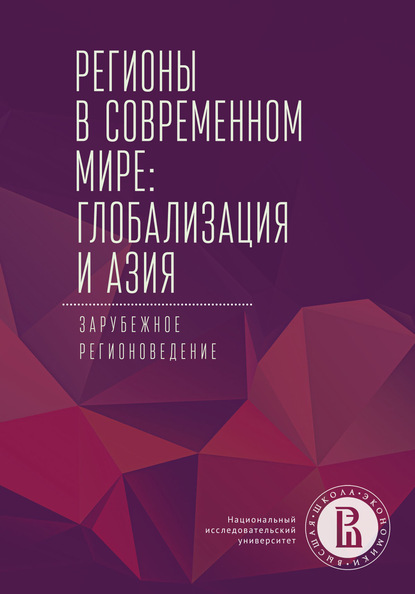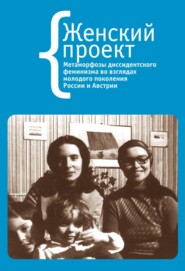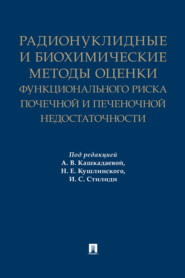По всем вопросам обращайтесь на: info@litportal.ru
(©) 2003-2024.
✖
Регионы в современном мире: глобализация и Азия. Зарубежное регионоведение
Автор
Год написания книги
2020
Настройки чтения
Размер шрифта
Высота строк
Поля
However, we should not neglect the fact that Wanbao company is a daughter of NORINCO. Before the NORINCO started managing the completed project, Wenbao Mining Ltd founded two subsidiaries such as Myanmar Wenbao Copper Mining Limited and Myanmar Yang Tse Copper Mining Limited [Myanmar Wanbao Company Limited’s webpage]. It could be confusing for researchers because Ivanhoe controlled the whole Monywe project under the same administration when they managed all mines before [Amnesty, 2015. P. 10]. For Letpaduang Mine, Myanmar Wanbao Copper Mining Ltd has managed the entire project, and Myanmar Yang Tse Copper Mining Ltd has handled the Sabetaung and Kyisintaung mines since 2010 [Amnesty, 2015. P. 10]. The only Letpadaung project became a center of international dispute and a dilemma of Sino-Myanmar relations similar to Chinese mega-projects in Myanmar. It happened because the late Myanmar Military government finalized all significant Chinese investments’ agreements before they transferred country power to the civilian administration in the mid of 2010 [Priscilla, 2015].
Growth of Anti-Protests on Letpadaung Project and investigation Commission Protests before the Commission
On 30 September 2011, the new government’s President Thein Sein suspended the Myitsone Dam General Project. This project is one of the significant Beijing ventures in Myanmar, and two countries reached the final agreement before Myanmar’s first democratic government era and Maung Aung Myoe also highlighted similar idea in his work [Maung Myoe, 2015. P. 37]. Many Myanmar people believe that China is trying to take all of Myanmar natural resources for their development benefits[72 - Maung Aung MYOE. Myanmar’s China Policy since 2011: Determinants and Directions // Int. J. Journal of Current Southeast Asian Affairs, 2015, Vol. 34. No. 2. P. 38.]. This mindset has come from a lack of trust in Chinese goods and business practices.
At the same time, the tensions appear between Myanmar Wanbao and villagers because the regional government forced local people to relocate from their land at the beginning of 2011 [Decicca, 2015]. According to Amnesty’s survey, 30 villages and 6,785 acres of land are located in the project area [Amnesty, 2015. P. 13]. Anti-Chinese activists used the opportunities to influence Letpadaung villagers easily. In the mid of 2012, residents opened the demonstrations camp near the Myanmar Wanbao headquarter[73 - Letpadaung Investigation Commission Issues Final Report, Myanmar Law Updates //Charltons, April 2013. URL: https://www.charltonsmyanmar.com/letpadaung-investigation-commission-issues-final-report/ (date of access: 19.02.2020).]. Before the sunrise of the 29th of November 2012, the police disbanded the protest campsite by using tear-bombs and water cannons. Some investigators found that the cops even used white phosphorous [Charltons, 2013. P. 1].
Letpaduang investigation Commission
Therefore, President Thein Sein formed the “Letpadaung Investigation Commission” and requested Aung Sann Su Kyi to become its chairperson on 1 December 2012 [Charltons, 2013. P. 1]. The President’s office appointed 16 members on the commission including military and police officers, academics and dignitaries. As a leader of the investigation commission, Aung San Su Kyi clearly understood the Chinese role in Myanmar Domestic policy and underlying Beijing’s interests[74 - Yun Sun. Can the NLD and China usher in a new era in relations? // The Myanmar Times, 2015.], and Yun Sun also indicated it in her work [Yun Sun, 2015].
The commission visited the Letpadaung Mine project area from 5th to 15th of December 2012. At the same time, commissioners also met with the injured demonstrators in the Monywa hospitals and Yangon General Hospital. According to the commission’s report, there were 108 people and 99 monks injured in the incident[75 - Letpadaung Investigation Commission Issues Final Report, Myanmar Law Updates //Charltons, April 2013. URL: https://www.charltonsmyanmar.com/letpadaung-investigation-commission-issues-final-report/ (date of access: 19.02.2020).]. According to Charlton, the investigators observed that the commission met with the Police Chief of Staff and Police colonel accountable for the Sagaing Region [Charltons, 2013. P. 3], and discussed the details about the crackdown incidents of the 29th of November. Later, the Minister of Home Affairs removed several police officers from their current duties in Sagaing Region as stated in the local newspapers. When Aung San Su Kyi met with the villagers, they responded with emotional words. Su Kyi told the villagers, “If we stop this project, it will not benefit the local community, or the country and they might think that our country cannot be trusted on the economy.” at the Letpadaung [Charltons, 2013. P. 4]. She also argued that “Myanmar needs Chinese investment. We have to get along with [China] whether we like it or not” [Ramachandran, 2016].
The commission also visited the Moneywa mine project areas, not only Letpaduang but also Sabetaung and Kyaysintaung projects. In March 2013, the investigation commission delivered its final report to the President and publishing it in governmental newspapers [Mizumo, 2016. P. 113]. However, the commission agreed to continue the Letpadaung Copper Mine Project recommending 42 essential suggestions to the mines’ investors. Official Beijing being satisfied with the final report of the commission and sent the Chinese ambassador to pay visit to Aung San Su Kyi’s residence, expressing his congratulation on behalf of the Chinese government on the 24th of April 2013 [BBC]. Myanmar Wanbao also released its statement, promising that “they will continue contributing to the sustainable development of our local community and of Myanmar as a whole” [Charltons, 2013. P. 3].
In the new contract, Myanmar Wanbao, UMEHL, and the government specified new profit-sharing of the project by allocating 51% to the Myanmar government, 30% to Myanmar Wanbao, and 19% to the UMEHL. On the other hand, the investors have to use one million US$ for corporate social responsibility and two million US$ for the annual environmental preservation [Mizumo, 2016. P. 113]. Yun Sun noted that “the investigation committee for the Letpdaung copper mine project, which she (Aung San Su Kyi) chaired, approved the continuation of the joint venture despite opposition from local residents and Myanmar society in general… her position (or rather lack of it) has made her, at the minimum, an acceptable Myanmar politician for China.” [Yun Sun, 2015].
Protests after the Commission
On 13 March 2013, Aung San Su Kyi visited local residents again, shortly after her commission published a final report. At the same time, the villagers did not stop their protests, rather intensifying them more provokingly. She faced emotional counter words from the villagers like during her first trip[76 - Letpadaung Investigation Commission Issues Final Report, Myanmar Law Updates // Charltons, April 2013. URL: https://www.charltonsmyanmar.com/letpadaung-investigation-commission-issues-final-report/ (date of access: 19.01.2020).], but this time they became more depraved and the government responded with tight security for her. The villagers also delivered their opinion that they did not want relocation and compensation, and they were not going to stop until the project shuts down totally [Charltons, 2015. P. 4].
In November 2013, police officers and villagers clashed again in the Myanmar Wanbao’s headquarter, near the Letpadaung Project. The police used rubber bullets for antiriot shotguns, and nine police officers and five activists were wounded [Win Zaw Latt, 2013]. However, the villagers and activists still commented on environmental pollution and unfair salary for local workers, relocation and compensation processes for their land. Before the Letpadaung Investigation commission, Myanmar Wanbao reimbursed 550,000 MMKyats[77 - Myanmar Wanbao Company Limited. URL: http://www.myanmarwanbao.com.mm/mm.html (19.01.2020).] for an acre. Later, according to the commission’s suggestion, Wanbao agreed to provide additional compensation for an acre between 700,000 and 1,25 million MMKyats [Maung Myoe, 2015. P. 38].
Back then, the author worked as a reporter, and visited the project on two times interviewing locals and activists. When he reached out to Myanmar Wanbao, they explained every detail of the Letpaduang project. The company sent journalists to meetings between villagers and company officers to examine how the company officials proposed CSR programs to local community. However, the author interviewed villagers and activists. The author asked, “If you need urgent development for your community, and, even, you know that you can produce valuable bronze from Letpaduang Mountain, what will you do?” The local activist answered that “We will not produce any copper or bronze from the Letpadaung Mountain, even we do not have anything to eat. We do not need any development if we have to destroy the Letpadaung, and we are going to enjoy its beauty until we die.” Therefore, we could clearly understand that the local residence feeling on the project.
When Myanmar Wanbao tried to start the project in December 2014, they faced vocal protests from the villagers again. Finally, the tension reached the highest point, after the police opened fire, and one villager, Daw Khin Win died on the spot. It received attention from international and local activists [Kivim?ki, 2016]. According to Amnesty’s research paper, there was preannounced lack of environmental concern and management in the mine. In May 2016, Myanmar Wanbao announced that they had started to producing copper from the Letpadaung Mine for the first time [Amnesty, 2016. P. 4].
Effects in Sino-Myanmar Relations
Every Myanmar government has believed that China is the paramount partner for domestic and foreign interests [Toh Han Shih, 2014]. Until the Myanmar’s democratization period, China was the leading investor in Myanmar. However, after a series of protests in Letpadaung Copper Mine Project took place, Beijing investments dropped rapidly [Yun Sun, 2012. P. 75]. In the first year of Thein Sein’s administration, 2011-2012, Chinese FDI in Myanmar reached US$ 4345.73[78 - Myanmar State Directorate of the Investment and Company Administration official Website. URL: https://www.dica.gov.mm/en/taxonomy/term/38 (date of access: 19.02.2020).] million, and it was the second-highest amount in two countries trade since 1988, according to the Myanmar State Directorate of the Investment and Company Administration’s figures. However, in 2013-2014, FDI from China to Myanmar visibly dropped to the US$ 56.16 million, becoming the lowest since 1988 [DICA’s annual report].
In March 2016, the NLD government came into power. They continue focusing on the “China’s role in the region” and “Logic of geopolitic” when comstructing their foreign policy and Sudha Ramachandran has also illustrated symmetric idea in his work [Ramachandran, 2016]. However, the relations between the two countries have not improved as it was expected by both sides. The FDI from China never reached its highest pre 2011 point. On the other hand, the anti-Chinese sentiments are still festering in the Myanmar community.
Conclusion
Since 1988, Myanmar political activists had been trying to develop democracy in the country. However, they were suppressed by the Military government for over two decades, from 1988 to 2011. Therefore, majority of Myanmar people did not support the junta. They considered the government supporters and partner countries as traitors. Whenever the military government was under international pressure, China always stood by their side and supported with loans and investments [U Myo-Thit, 2017]. It has resulted in the development of the Sinophobia in Myanmar. The citizens did not trust Chinese investments because of their lack of duties for social responsibilities. Beijing understood for those sentiments and, therefore, tried to smooth every process for their investments in Myanmar with the Junta
However, the Chinese policies backfired when President Thein Sein’s government listened to their follow people’s voices. Consequently, the Beijing became concerned when the opposition was elected in the general election in 2015 [BBC, 2019]. In his trip, Wang Yi expressed hopes to his counterpart, Daw Aung San Su Kyi that Chinese interests in Myanmar will continue to be expected. The present situation of Sino-Myanmar relations, however, has many unresolved problems such the Chinese role in the Myanmar cease-fire, Myitsone Dam General Project and border issues.
References
Open for Business? Corporate Crime and Abuses at Myanmar Copper Mine // AmnestyInternational,February2015.URL:https://www.amnesty.org/en/documents/asa16/0003/2015/en/ (date of access: 19.02.2020). (in English)
A. Clapp Priscilla. China’s Relations with Burma: Testimony Before The U.S-China Economic and Security Review Commission on China’s Relations with Southeast Asia // United States Institute of Peace, 2015. URL: http://www.usip.org/publications/2015/05/13/china-s-relations-burma (date of access: 19.02.2020). (in English)
Atsuko Mizumo. Economica Relations Between Myanmar and China // JICA Research Institute, Department of International Economy and Business // Faculty of Economics // Kyushu University, Japan, 2016. URL: https://link.springer.com/chapter/10.1007/978-4-431-55735-7_8 (date of access: 19.02.2020). (in English)
Copper Mine Investigation Commission, Letpadaung Copper Mine Investigation Commission Issues Final Report // The President’s Office of The Republic of the Union of Myanmar, April 2013. URL: http://www.charltonslaw.com/letpadaung-investigation-commission-issues-final-report/ (date of access: 19.02.2020). (in English)
China-Myanmar agrees to deepen comprehensive strategic cooperation // Xinhuanet, 2014. URL: http://news.xinhuanet.com/english/china/2014-11/15/c_133790813.htm (date of access: 19.02.2020). (in English)
Cheny Ang Li and James Char. China-Myanmar Relations Since Naypyidaw’s Political Transition: How Beijing Can Balance Short-Term Interests and Long-Term Values // S. Rajaratnam School of International Studies, 2015. URL: https:// www.rsis.edu.sg/wp-content/uploads/2015/03/WP288_150316_China-Myanmar-Relations (date of access: 06.01.2020). (in English)
Debby Sze Wan Chan. China’s Diplomatic Strategies in Response to Economic disputes in Myanmar // In. J. International Relations of the Asia-Pacific, Vol. 00, 2018, pp. 1–30, Oxford Academic. URL: https://academic.oup.com/irap/advance-article/doi/10.1093/irap/lcy026/5149704 (date of access: 01.01.2020). (in English)
Lauren Decicca. In the Shadow of Letpadaung: Stories from Myanmar’s Largest Copper Mine // National Resource Governance Institute, 2015. URL: https:// resourcegovernance.org/blog/shadow-letpadaung-stories-myanmars-largest-coppermine (date of access: 01.01.2020). (in English)
Myanmar Cracks Down on Protest at China-owned Mine // China Digital Times, 2012. URL: http://chinadigitaltimes.net/2012/11/myanmar-cracks-down-on-protestat-china-owned-mine/ (date of access: 02.01.2020). (in English)
Myanmar Wanbao Company Limited. URL: http://www.myanmarwanbao.com.mm/mm.html (date of access: 03.01.2020). (in English)
Maung Aung MYOE, Myanmar’s China Policy since 2011: Determinants and Directions // Int. J. Journal of Current Southeast Asian Affairs, 2015, Vol. 34. No. 2. Pp. 21-54. URL: https://journals.sub.uni-hamburg.de/giga/jsaa/article/view/872/879. Html (date of access: 05.01.2020). (in English)
Maria Abi-Habib. How China Got Srilanka to Cough Up a Port// The New York Times, 2018, URL: https://www.nytimes.com/2018/06/25/world/asia/china-sri-lanka-port.html (date of access: 02.01.2020). (in English)
Prashanth Paremeswaran, China’s Influence in Myanmar Facing Growing Scrutiny: Beijing Is still Struggling to Adapt To Myanmar’s New Landscape // Di- plomat Magazine, 2015. URL: http://thediplomat.com/2015/01/chinas-influence-in-myanmar-facing-growing-scrutiny/ (date of access: 02.01.2020). (in English)
Sudha Ramachandran. Chinese Influence Faces Uncertain Future in Myanmar // The Jamestown Foundation, Global Research & Analysis, 2016. URL: https:// jamestown.org/program/chinese-influence-faces-uncertain-future-in-myanmar/ (date of access: 02.01.2020). (in English)
Toh Han Shih. China’s rivals catching up in investment race in Myanmar // South China Morning Post, 2014. URL: http://carnegietsinghua.org/2014/01/25/chinese-investment-is-key-to-myanmar-s-reforms-pub-54299 (date of access: 04.01.2020). (in English)
Tang Xiaoyang. Chinese Investment is Key to Myanmar’s Reform // Carnegie-Tsinghua, Center for Global Policy, 2014, URL: http://carnegietsinghua. org/2014/01/25/chinese-investment-is-key-to-myanmar-s-reforms-pub-54299 (date of access: 02.01.2020). (in English)
Timo Kivima?ki. Politics of Economic Relations Between China and Myanmar // In Book: Chinese Global Production Networks in ASEAN, 2016. URL: https://www.researchgate.net/publication/300130508_Politics_of_Economic_Relations_Between_China_and_Myanmar (date of access: 05.01.2020). (in English)
Yun Sun. Can the NLD and China usher in a new era in relations? // The Myanmar Times, 2015. URL: http://www.mmtimes.com/index.php/opinion/18167-can-thenld-and-china-usher-in-a-new-era-in-relations.html (date of access: 05.01.2020). (in English)
Yun Sun. China’s Strategic Misjudgement on Myanmar // Int. J. Journal of Current Southeast Asian Affairs, 2012, Vol. 31. No. 1. P. 73–96. URL: https:// journals.sub.uni-hamburg.de/giga/jsaa/article/view/513.html (date of access: 09.01.2020). (in English)
Арктическая политика республики Индия
ШАУМЯН ТАТЬЯНА ЛЬВОВНА
кандидат исторических наук, руководитель Центра индийских исследований Института востоковедения РАН
tshaumyan@gmail.com
В статье анализируются значение геополитического региона Арктики, основные направления внешней политики Индии в Арктике, происходящие глобальные процессы, такие как глобальное потепление и таяние арктических льдов; рассматривается значение Северного морского пути с точки зрения использования его для осуществления коммуникаций; показана политика арктических и неарктических государств, расширение их сотрудничества в этой зоне. Взаимодействие российских и индийских компаний в разработке арктических месторождений определяется стремлением подтвердить заинтересованность в Индии как важном союзнике на мировой арене. Индия стремится сохранить для себя возможность маневра при участии в решении арктических проблем, используя членство в Арктическом совете. Она намерена принимать активное участие в инициативах, связанных с проблемами Арктики. Партнерство Дели с Россией может способствовать сдерживанию Китая в его соперничестве с Индией в борьбе за энергетические ресурсы Арктики.
Ключевые слова: Арктика, Индия, Россия, Северный морской путь, Арктический совет, арктические и неарктические государства.
ARCTIC POLICY OF THE REPUBLIC OF INDIA
SHAUMYAN TATIANA LVOVNA
Head, Centre for Indian Studies, Institute of Oriental Studies Russian Academy of Sciences
tshaumyan@gmail.com

















